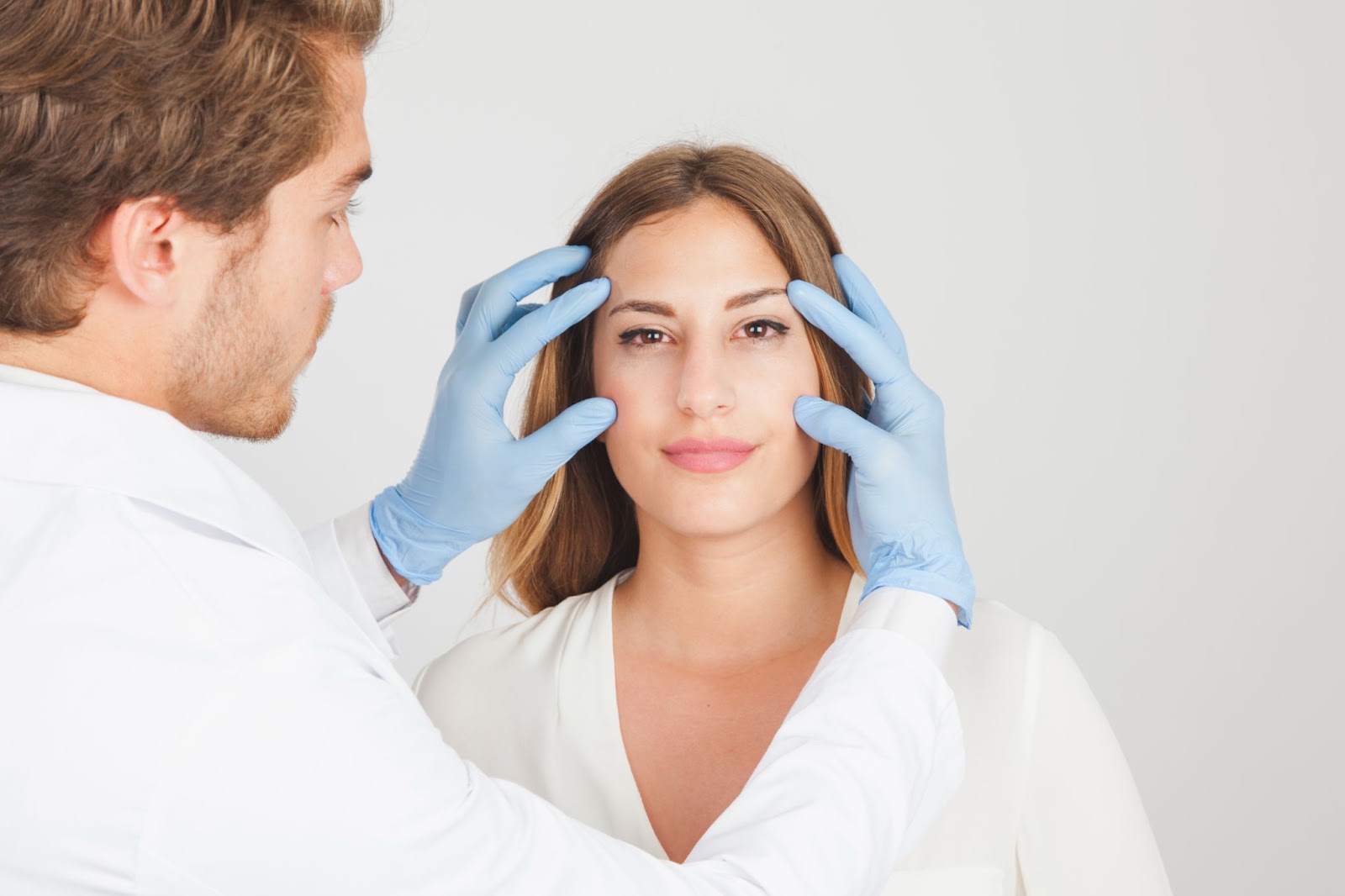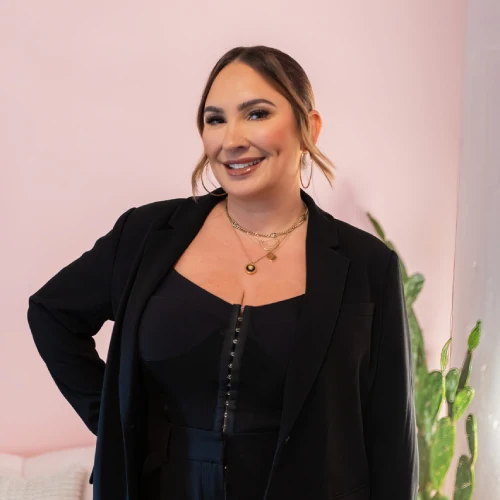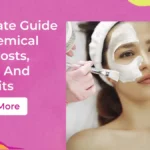More than 13 million noninvasive procedures occurred in 2020, making Botox and fillers the most popular cosmetic treatments across the United States. The medical community believed these dermal fillers would last 6 to 18 months. Dr. Gavin Chan's research revealed something unexpected - these fillers can stay in the body for up to 8 years. …

More than 13 million noninvasive procedures occurred in 2020, making Botox and fillers the most popular cosmetic treatments across the United States. The medical community believed these dermal fillers would last 6 to 18 months. Dr. Gavin Chan’s research revealed something unexpected – these fillers can stay in the body for up to 8 years. This finding changes everything we thought we knew about these treatments.
My work keeps me up to date with esthetic medicine’s latest developments, and I know how crucial it is to set the right expectations for these treatments. This piece breaks down how long different injectable treatments last. The options range from hyaluronic acid fillers that typically work for 6 months to 2 years, to more durable choices like poly-L-lactic acid that show results beyond 2 years.
The Science Behind Botox and Filler Longevity
The science behind injectables explains why they don’t last forever. Let’s look at what happens under your skin when you get these popular treatments.
How Botox works in your body
Botox is a neurotoxic protein that follows a specific biochemical process. The injection binds to cholinergic nerve terminals – nerves that tell your muscles to contract. Your nerves absorb the toxin through a process called receptor-mediated endocytosis.
Botox stops muscle movement by blocking acetylcholine release, a neurotransmitter that triggers muscle contractions. This happens because it cleaves SNAP-25, a protein your nerve endings need to release neurotransmitters. The result is a temporary chemical denervation that partly paralyzes the muscle.
The paralytic effect usually starts within 24-72 hours after injection. It peaks around 4-7 days and maintains its maximum effect for about 2-3 months. Your nerves stay intact – Botox just blocks their communication with muscles temporarily.
How dermal fillers integrate with facial tissues
Dermal fillers work differently from Botox. They add volume to tissues instead of relaxing muscles. Hyaluronic acid (HA) fillers, the most common type, fill spaces in your tissue and lift the skin surface.
HA fillers work so well because they love water. A single molecule attracts and holds up to 1,000 times its weight in water, which creates instant volume and hydration where it’s injected. The filler then biointegrates – it weaves itself into your dermal fibers and becomes part of your tissue structure.
Ultrasound imaging shows that quality fillers partly bio-integrate within 48 hours. They completely integrate with tissue 30 days after injection. Fluid fillers spread into superficial fascial layers, while thicker products stay put.
Why do results fade over time
Botox and fillers break down differently in your body.
Botox wears off as your body creates new neuromuscular junctions. Your nerve terminals grow new connections to talk to the muscle again. The Botox protein breaks down into amino acids that your body absorbs.
Regular Botox and fillers use can lead to interesting long-term changes. Muscles that stay inactive can shrink and weaken, which might make results last longer. Some patients’ muscles “forget” certain expressions with repeated treatments, so they need fewer touch-ups.
Your body’s enzymes gradually break down dermal fillers. Natural hyaluronic acid lasts just 24 hours in your skin. Modern fillers last much longer thanks to cross-linking technology with BDDE (1,4-butanediol diglycidyl ether).
Areas that move more, like your lips, lose filler faster than static areas. Your metabolism matters too – active people might process fillers more quickly.
These mechanisms show why results don’t last forever and why you need maintenance treatments to keep your improved appearance.
Realistic Timelines for Botox Results
People usually want to know when they’ll see results from their Botox and how long these results will stay before they book their first appointment. Let’s head over to what you can realistically expect based on clinical evidence.
First-time vs. regular Botox users
You might wonder if your results will be different as a first-time user compared to experienced ones. In stark comparison to this, first-time Botox usually lasts about the same time as later treatments—around 3-4 months. Not withstanding that, some clinicians notice first-time treatments might wear off a bit faster as your body adapts to the injections.
The interesting part is that with regular treatments, your muscles can start to “train” themselves to contract less often. These muscles shrink from lack of use, and many patients find their second and third treatments last longer. This effect grows over time, which might let you space out your future appointments.
Treatment areas and their duration
Each facial region responds differently to Botox. The duration changes substantially based on the treatment area:
- Forehead and eyebrow wrinkles: Results usually last 3-4 months, and you’ll see visible changes within 4 weeks of your first injection.
- Crow’s feet: Your eye area’s delicate skin breaks down Botox faster, with effects lasting about 7-12 weeks.
- Frown lines: These deep lines between eyebrows typically respond for 3-4 months.
- Masseter (jaw muscle): Treatments for jaw clenching or slimming last longer—usually 4-6 months.
- Hyperhidrosis (excessive sweating): Botox results for underarm sweating often last at least 6 months.
Areas with more muscle movement process Botox faster than static regions. To name just one example, if you’re very expressive or talk a lot, the product might break down faster in the more active parts of your face.
Signs your Botox is wearing off
Knowing when your Botox starts to fade helps you book touch-ups at the right time. Clinicians suggest watching for these signs:

- Return of dynamic wrinkles – The biggest problem is when expression lines like forehead wrinkles slowly come back. You’ll first notice subtle changes in how symmetrical your face looks.
- Increased muscle movement – Your eyebrows might move more freely around 6 weeks after treatment. This gradual return of muscle function shows the neurotoxin wearing off.
- Diminished smooth appearance – That refreshed, smoother look starts giving way to creases and folds that were previously softened.
- The shorter duration between treatments – Results that don’t last as long as before might point to developing tolerance or not enough dosage.
Timing plays a crucial role in getting the best results. Most experts suggest booking your next appointment before the effects completely fade—usually every 3-4 months for maintenance. Your provider can check if changes to dosage or injection technique might make your results last longer during this time.
Note that Botox takes time to work. Changes start showing up within 3-5 days, but the best results take about 10-14 days to fully develop. Planning around this timeline helps ensure you’ll look your best for important events.
How Long Different Types of Fillers Last
“Most hyaluronic acid dermal fillers tend to fall within the 6 to 18-month range, however, the expected longevity of your fillers will also vary from person to person.” — Dr. Amir Karam, Board-Certified Facial Plastic Surgeon.
At the time you’re deciding between injectable treatments, knowing how long different fillers last helps you set realistic expectations about your investment. Let’s get into how long each major type of dermal filler stays effective in your face.
Hyaluronic acid fillers (6-18 months)
Hyaluronic acid (HA) fillers lead the market because of their safety profile and moderate duration compared to other injectables. These naturally-derived substances add immediate volume and attract moisture to the treatment area.
The common belief suggests 6-12 months of duration, but recent research shows HA fillers might stay in the body much longer. Some patients experienced delayed infections up to 2 years after treatment, and MRI imaging confirmed residual filler presence 2.5 years post-injection. In spite of that, most visible cosmetic effects follow a predictable timeline:
- Lips and mobile areas: Restylane Silk stays effective for 4-6 months
- Cheeks and midface: Products like JUVÉDERM VOLUMA can last up to 24 months with maintenance treatments
- Under-eye region: Results often stay visible for 12 months or longer in tear troughs
- Nasolabial folds: Most HA fillers keep their results for 9-12 months here
Different brands affect how long results last. Standard Restylane products typically work for 6-12 months, while specialized formulations like Restylane Lyft maintain results for 9-12 months. More than that, Juvederm Vollure can keep results visible for up to 18 months in suitable treatment areas.
Calcium hydroxylapatite fillers (12-15 months)
Calcium hydroxylapatite (CaHA) fillers, such as Radiesse, last longer than standard HA options. These products give immediate volume while stimulating collagen production for extended benefits.
Clinical studies show that CaHA fillers usually stay effective between 12-18 months. This extended duration comes from their unique dual-action mechanism; they provide immediate correction and trigger your body’s natural collagen production around the microspheres.
CaHA’s effectiveness changes based on where it’s used. Deep facial lines and volume restoration treatments last about 12 months. Some patients see visible improvements up to 24 months after injection, though most doctors suggest maintenance at 12-15 months to keep optimal results.
Poly-L-lactic acid and other long-lasting options (2+ years)
Poly-L-lactic acid (PLLA) fillers, including Sculptra Esthetic, rank among the longest-lasting temporary filler options. The FDA approved PLLA in 2004 to treat facial lipoatrophy, and it works differently than immediate-volume fillers.
Unlike HA fillers, PLLA builds collagen gradually over time. The initial gel carrier disappears within days, but PLLA particles keep working for months, with results lasting 2+ years. Patients usually need several treatments spaced 3-6 weeks apart for maximum correction, and about half the product breaks down within 6 months.
Studies that compare PLLA to other collagen stimulators prove its extended duration of 2-3 years for volumizing effects. Most doctors recommend yearly maintenance treatments (using 1-2 vials) instead of waiting for complete disappearance.
Bellafill offers an option that might last up to five years for patients who want even longer-lasting results, though it’s not among the most commonly used filler types discussed here.
Factors That Affect Your Treatment Longevity
Your body’s unique makeup is a vital factor that determines how long injectable treatments will last. Average durations exist, but personal factors can make your results last longer or shorter than expected.
Metabolism and physical activity levels
Your metabolic rate determines how fast Botox and fillers break down in your body. People with faster metabolisms, especially athletes and regular exercisers, see their results fade sooner as their bodies process these substances faster. Research shows that people with higher muscle-to-fat ratios need touch-up treatments more often.
Exercise itself changes how long results last. Heavy workouts right after treatment might spread the product faster, which is why most doctors tell you to skip intense exercise for about three days after getting injections.
Age and skin condition
Our slowing metabolism as we age can help injectables last longer. All the same, aging reduces collagen production and skin elasticity, which might cancel out this benefit.
Your skin’s condition changes how fillers blend with tissues. Research shows aging happens in every layer of the face, and this changes how products spread and keep their volume-adding effects.
Facial movement patterns
The way you move your face changes how long treatments last. Parts of your face that move often—like smile lines or lips use up injectables faster than areas that don’t move much.
Studies show that Botox can change how we process emotions by limiting facial expressions. Regular facial movements break down both Botox and fillers naturally. People who are more expressive might need treatments more often.
Injection technique and provider skill
The practitioner’s expertise makes a big difference in how long treatments last. Injecting at the right depth helps fillers blend better with surrounding tissues. Research proves that placing products in the correct facial layers gives more predictable results that last longer.
The way providers distribute product matters, uneven placement leads to irregular absorption and shorter-lasting results. Experienced doctors know how to place products based on your face’s unique structure and movement patterns, which can add months to your results.
Extending the Life of Your Injectable Treatments
“External factors that prevent results from lasting longer include UV exposure and lifestyle choices such as drinking and smoking.” Dr. Amir Karam, Board-Certified Facial Plastic Surgeon.
You want to get the most out of your Botox and fillers investments. The good news is that extending your results doesn’t need complicated routines. A few basic practices can make all the difference.
Maintenance schedules that work
Your injectables will last longer when you schedule touch-ups before they wear off completely. The right timing makes all the difference. Muscles respond better over time when you maintain some active product in your system. Botox treatments every 3-4 months can teach your muscles to move less, which might lead to longer-lasting results. The sweet spot for filler check-ins falls between 6-12 months, based on the type and area treated. This strategy keeps wrinkles at bay and delivers consistent results.
Skincare practices that preserve results
The right skincare routine becomes your injectable’s best friend. Hyaluronic acid serums help boost and maintain filler volume. Antioxidants like Vitamin C shield your skin from environmental damage. A quality moisturizer strengthens your skin’s barrier and keeps hydration locked in. Sun protection remains your top priority because UV rays break down both Botox and fillers faster, which could cut their lifespan short.
Lifestyle adjustments worth thinking over
Your daily habits can make your treatments last longer. Staying hydrated helps hyaluronic acid-based fillers work better because they bind to water. The more water you drink, the plumper your fillers stay. Research shows zinc supplements might help Botox last longer, with studies linking zinc levels to how well the neurotoxin works. On top of that, stress management through meditation can prevent cortisol spikes that speed up aging and work against your injectable results.
Combination treatments for longer-lasting effects
Different treatments work better together. Research shows radiofrequency treatments before fillers create “autologous containment collagen canals” that make fillers last longer. This approach might reduce the filler amount you need while extending the results. Botox and fillers used together often last longer than either treatment by itself.
Conclusion
Injectable treatments, including Botox and fillers, have different lifespans, making it essential to set realistic expectations for your aesthetic goals. Botox and fillers typically last around 3-4 months, while some options, like Sculptra, can provide results for over two years. Recent studies suggest that certain fillers may remain in tissues longer than previously thought.
Your body’s unique traits significantly influence how long Botox and fillers last. Factors like age, metabolism, facial movements, and lifestyle choices all play a role. Maintaining good skincare habits, staying hydrated, and protecting your skin from the sun can help extend your results.
Choosing the right provider is key to maximizing the success and longevity of your Botox and fillers. An experienced practitioner ensures optimal product placement and a customized treatment plan that meets your needs. Schedule a consultation with a professional who understands these subtle differences.
For natural-looking, long-lasting results, a proactive approach is best. Regular maintenance treatments prevent the product from completely wearing off, helping to train your muscles and maintain volume more effectively. Combining professional care with healthy personal habits will ensure your Botox and fillers last as long as possible




